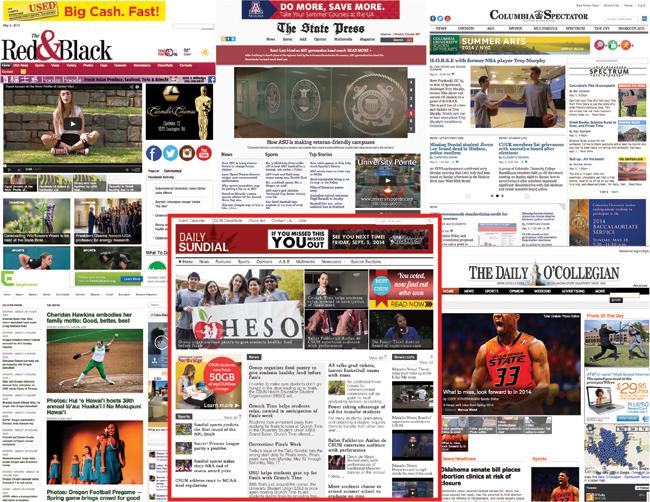
The Daily Sundial is shifting to a fully digital newsroom in the coming school year in order grow its online and mobile presence, while moving to a weekly print edition.
The journalism faculty endorsed the decision in order to keep the curriculum in line with industry trends regarding digital content, according to Melissa Lalum, publisher and adviser for the Sundial.
“I think giving students a richer better skill set in digital journalism and mobile journalism is beneficial and frankly, necessary now if they want to be workforce ready,” Lalum said. “Where are students getting jobs? And, what jobs are available right now? And of course, the digital world drives that.”
She believes the switch will improve the paper’s digital presence, serving a new generation of readers.
“More students go online for their news. Our app and website will allow us to update students more immediately and attract a larger audience,” said Andrew Martinez, next year’s Sundial editor in chief. “We have the potential to be one of the more exciting media outlets by expanding our online presence and integrating more social media into our reporting.”
According to the Pew Research Center in 2012, 71 percent of Americans 18 to 29 years old say the internet is their main source of news and 62 percent of smartphone users said they got their news from their mobile device. The Sundial’s mobile web pageviews reflect this and are up more than 500 percent and Twitter followers are 150 percent higher since the 2011-2012 school year.
“Millennials, and that’s who dominates our campus, are changing how they consume news and information,” Lalum said. “All you have to do is step outside and look around our campus and see that most students, faculty, and staff members are connected to their mobile device.”
The change to a weekly will also save the Sundial about $40,000 in printing, which will help offset the loss in advertisement revenue over the past several years, though this was not the only motivation for the change, Lalum said.
The Sundial will be joining the likes of Arizona State University, University of Georgia, and University of Oregon in a nationwide trend of college newspapers reducing their print frequency and going online first.
The Oklahoma State University’s Daily O’Collegian is taking its daily paper to three days a week this coming the fall.
After a campus wide survey, the O’Collegian discovered that their paper was least popular on Tuesdays and Thursdays and decided that by dropping those two days they could save a significant amount of money.
“Also we are a very small staff, so we don’t really have that much time to focus on our online stuff, said Kyle Hinchey, editor and chief of the O’Collegian. “We are just trying to effectively reach our readership where they want to be reached–and that’s online.”
After over 100 years of daily publication, Hinchey said some people expressed concern about the changes.
“It makes people think, ‘Oh no, we’re becoming an inferior product’,” Hinchey said. “But we are not becoming an inferior product we are just transitioning to an online format.”
Martinez said he is excited to take the paper in this new direction. Each weekly issue, which will come out on Wednesdays, will be at least 16 pages with color, giving the staff more room for creativity.
“We will be able to explore more dynamic visual layouts, more dynamic content,” Martinez said. “We’re going to take some of the best visual ideas we’ve seen in some sections and apply them to other sections.”
Martinez said his biggest concern is making sure that online updates are made throughout the day as the staff works with other student-run media at CSUN to produce in-depth content.
Linda Bowen, chair of the journalism department, said the changes to the Sundial are part of a bigger department-wide media convergence plan to create more unity among all seven student media outlets.
Bowen indicated it is important that students have a practicum experience that prepares them to go out and get jobs in the field and believes that the Sundial has been doing that.
“I think students are very prepared and I know that to be true because of the kinds of jobs that students are getting,” she said.
Bowen said a number of student Sundial students have gone to work at L.A.’s NBC 4 as digital producers because of their experience with online reporting and social media.
Bowen believes the change to go online first with a weekly publication is the right direction for the Sundial.
“I think we are way ahead of the curve in terms of what our plans are and when we are implementing this,” said Bowen.





